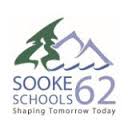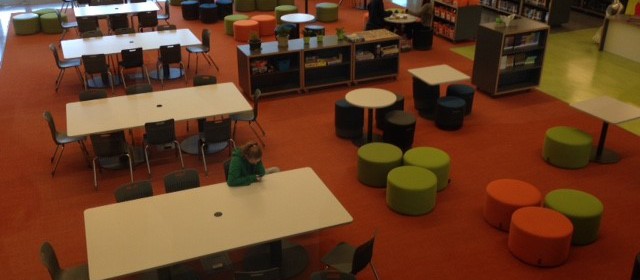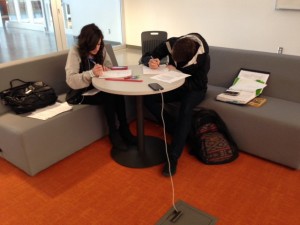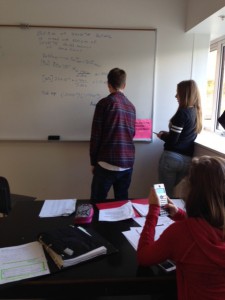Media Smarts

Royal Bay Secondary Learning Commons
Resources for Students, Teachers and Parents


With the vast amount of information and the advancements in technology, the way students learn and the how faculties teach is changing. This shift in education, driven by technology, has uncovered an opportunity for school libraries to play an important role in school improvement in this educational transformation era (Canadian Library Association, 2014). “For technology to affect student learning, schools must ensure that appropriate resources are in place” (Day, 2010, p. 43). The Learning Commons will supply these resources. The Learning Commons goes beyond the provision of resources, however; it enables learners and faculty to use and experiment with the resources. “The finding of most studies is that technology initiatives will be successful only if professional development and technology support are part of the implementation process” (Nagel, 2010 as cited in Logan, 2010, p. 34). The Royal Bay Learning Commons acts as the laboratory for the experimentation and understanding how the technology can best support the pedagogy to increase student learning and motivation.
Written by Tanya Phillips
References:
Candian Library Association (2014). Leading Learning: Standards of Practice for School Library Learning Commons in Canada. Retrieved from http://clatoolbox.ca/casl/slic/llsop.pdf
Day, C.W. (2010, Feb 1). Classroom Technology: Do you have the right tools for 2010. American School and University Magazine. Retrieved from http://asumag.com/constructiontechnology/tech-talk-classroom-technology
Hayes. T (2014, Jan) Library to Learning Commons. A Recipe for Success. Education Canada Magazine. Retrieved from http://www.cea-ace.ca/education-canada/article/library-learning-commons
Logan, G. (2010). Mobile Technologies in the Classroom. ATA Magazine, 91(1), pp. 32-35.


Tanya Phillips
Imagine a school where there is a physical and virtual space for collaboration among students, faculty and administration. This space is “the hub of the school, where exemplary learning and teaching are showcased, where professional development, teaching and learning expe rimentation and action research happen” (Loertscher, Koechlin & Zwaan, 2008 as cited in Hayes, 2015). The faculty and administration identify that students learn in unique ways and the concept of a learner centered environment is a part of the school’s culture. Administration and faculty collaborate to “…build the capacity of learners to make sense of the world around them, to graduate good citizens in a democratic society, and to prepare our youth for successful careers and healthy, satisfying personal lives” (Canadian Library Association, 2014). The British Columbia’s Teacher Librarian Association (BCTLA) has identified the need for the scenario described and are working to transform the library into a Learning Commons in schools across BC, among these – schools in the Sooke School District.
rimentation and action research happen” (Loertscher, Koechlin & Zwaan, 2008 as cited in Hayes, 2015). The faculty and administration identify that students learn in unique ways and the concept of a learner centered environment is a part of the school’s culture. Administration and faculty collaborate to “…build the capacity of learners to make sense of the world around them, to graduate good citizens in a democratic society, and to prepare our youth for successful careers and healthy, satisfying personal lives” (Canadian Library Association, 2014). The British Columbia’s Teacher Librarian Association (BCTLA) has identified the need for the scenario described and are working to transform the library into a Learning Commons in schools across BC, among these – schools in the Sooke School District.
“A Learning Commons is a common, or shared, learning ‘space’ that is both physical and virtual. It is designed to move students beyond mere research, practice, and group work to a greater level of engagement through exploration, experimentation, and collaboration. A Learning Commons is more than a room or a website. A Learning Commons allows users to create their own environments to improve learning. A Learning Commons is about changing school culture, and about transforming the way learning and teaching occur” (Loertscher, Koechlin & Rosenfeld, 2012).
References:
Canadian Library Association (2014).Leading Learning: Standards of Practice for School Library Learning Commons in Canada. Retrieved from http://clatoolbox.ca/casl/slic/llsop.pdf
Hayes. T (2014, Jan) Library to Learning Commons. A Recipe for Success. Education Canada Magazine. Retrieved from http://www.cea-ace.ca/education-canada/article/library-learning-common
Loertscher, D.V., Koechlin, C. & Rosenfeld, E. (2012). The virtual learning commons: Building a participatory school learning community. Salt Lake City, UT: Learning Commons Press.
The Curriculum team is currently looking at the new curriculum to see what is new. We have gone through the resource Centre and are now able to highlight some of the key resources that teachers and Teacher-Librarians can access to use to support this new curriculum.